Are you gearing up to submit a discovery request but unsure where to start? Crafting a clear and effective letter can make all the difference in your legal proceedings. In this article, we'll guide you through the essential elements of a robust discovery request letter template, ensuring you communicate your needs with precision and professionalism. Stick around to dive deeper into the tips and tricks that will help you create a winning discovery request!

Clear Identification of Parties
In legal proceedings, a clear identification of parties involved is crucial for the discovery request process. This involves accurately naming the entities included in the litigation, such as individuals, corporations, or government agencies. The plaintiff may include their full name, address, and contact information, along with the same comprehensive details for the defendant. It's essential to specify any third-party entities that may hold relevant information, like associated businesses or employees, to ensure a thorough discovery process. Proper identification aids in the clarification of roles and responsibilities in the case, facilitating precise communication and documentation exchanges between all parties.
Specific Document Description
A discovery request for specific documents requires precise language to ensure clarity. Essential documents include financial statements from XYZ Corporation, dated from January 1, 2020, to December 31, 2022, tax returns filed with the Internal Revenue Service for the years 2020 to 2022, and contracts executed between XYZ Corporation and ABC LLC concerning service agreements established on March 10, 2021. Additional documents include correspondence related to the merger discussions held in September 2021 and any internal memos regarding employee layoffs occurring in January 2022. These documents are crucial for analyzing financial health and compliance with regulatory standards.
Relevant Case Details
Relevant case details often include the case number (assigned by the court) for tracking purposes, parties involved (such as the plaintiff and defendant in a civil case), and the filing date, which indicates when the case was officially submitted. Additionally, the jurisdiction or the court's name (for example, Los Angeles County Superior Court) is essential for context. Capturing the nature of the case, such as whether it involves a breach of contract or personal injury, provides a clearer understanding of the legal context. It might also be informative to include the names of attorneys representing each party to facilitate communication and clarify representation. Lastly, any pre-trial motions or orders can highlight the procedural history of the case, offering insights into its current status and urgency.
Deadlines and Timelines
Deadlines for submitting discovery requests vary by case jurisdiction and can significantly impact litigation flow. In federal court, Rule 26 outlines initial disclosures required within 14 days after Rule 26(f) conference, while discovery requests typically must be served within a designated period specified in the scheduling order (often 30 days prior to close of discovery). State courts, like California, have different timelines; discovery must be completed 30 days before the trial date. Adhering to these timelines ensures compliance with court rules and can prevent motions to compel or sanctions. Also, parties must consider the specific procedural requirements outlined in local rules or standing orders, as these dictate the method of submission and necessary documentation for each discovery type, including interrogatories and depositions. Understanding these time-sensitive components is crucial for effective legal strategy and case management.
Legal Compliance and References
Legal compliance in the context of discovery requests involves adherence to regulations governing the exchange of information in litigation. Discovery requests, such as interrogatories and requests for production, must comply with rules established by jurisdictions, including the Federal Rules of Civil Procedure (FRCP) in the United States, particularly Rule 26 regarding the duty to disclose and relevant scope of discovery. References to case law, such as *Zubulake v. UBS Warburg LLC*, can illustrate the necessity of preserving evidence and proper procedures for documenting compliance. Additionally, statutes like the Electronic Communications Privacy Act (ECPA) play a critical role in ensuring that the privacy of electronic communications, including emails and text messages, is respected during the discovery process. Understanding these regulations and referencing pertinent legal precedents ensures that discovery requests are effective while safeguarding the rights of all parties involved.

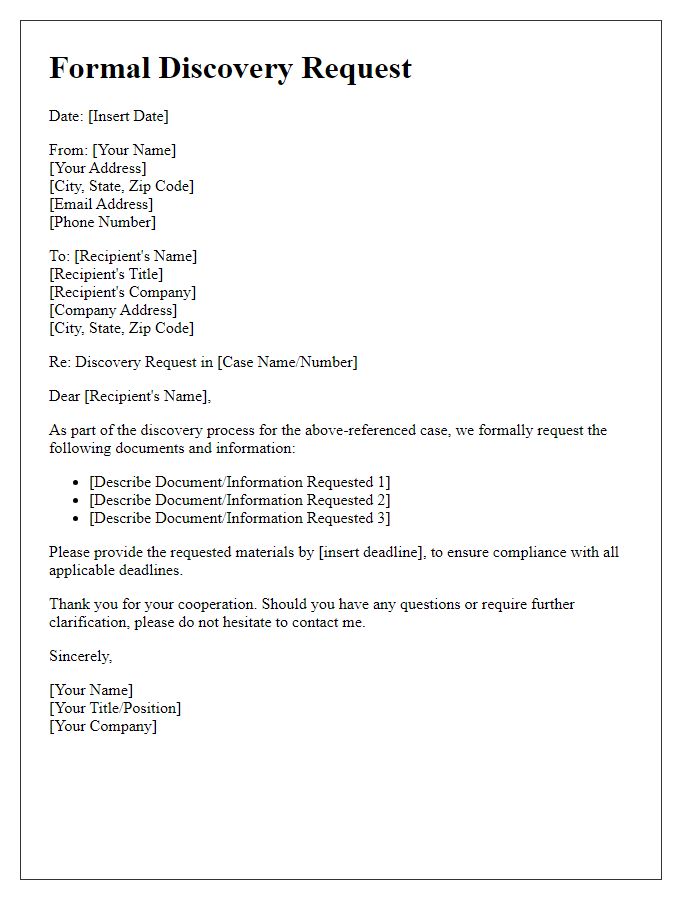
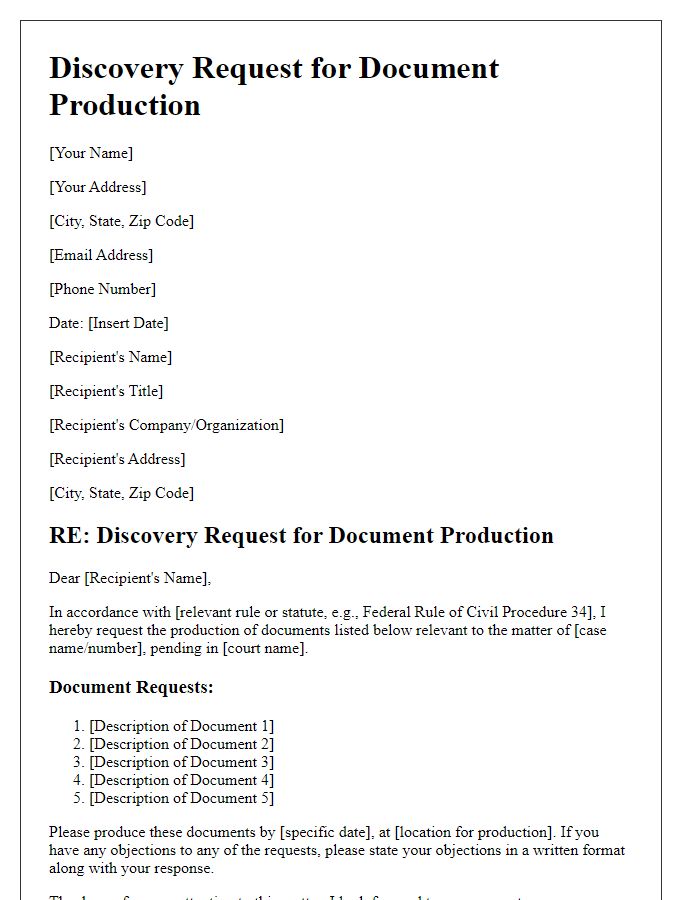
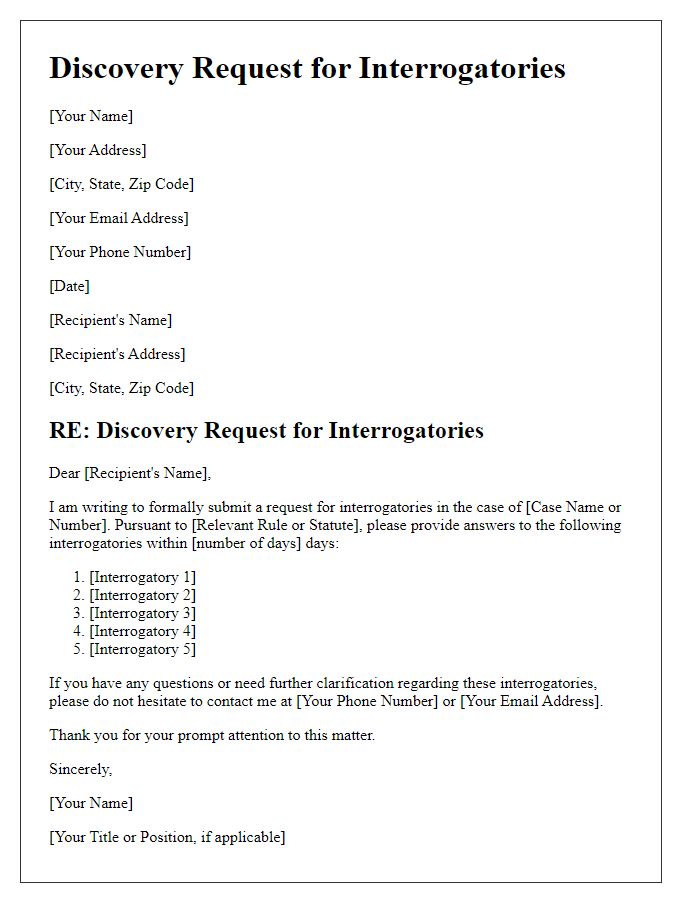
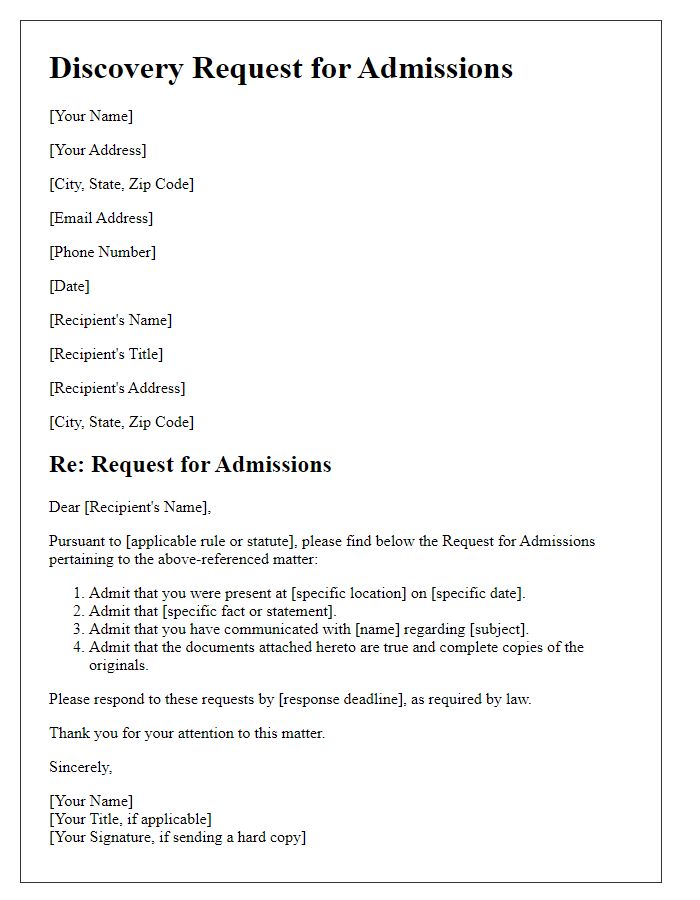
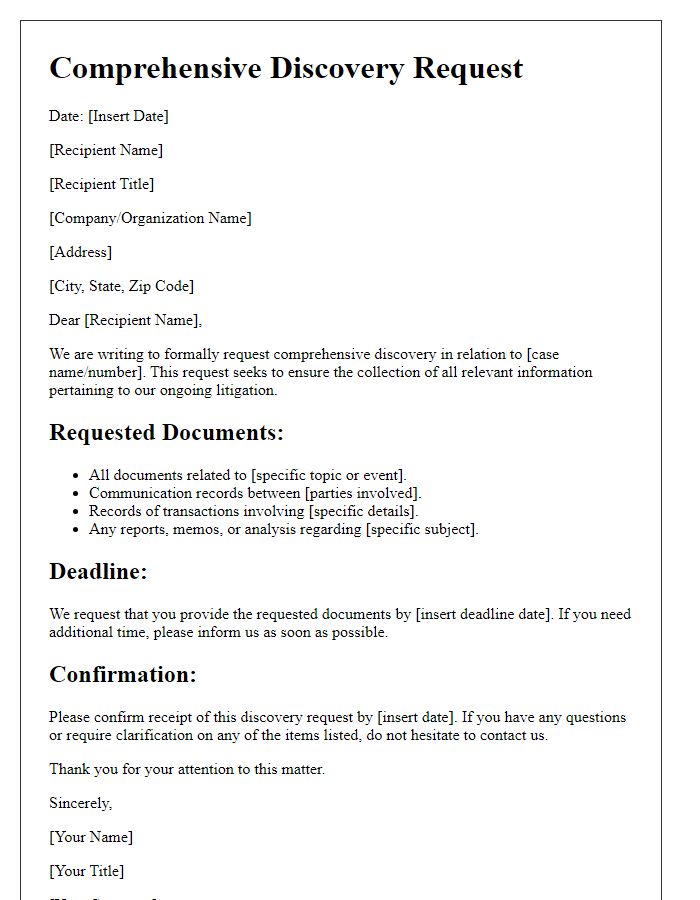
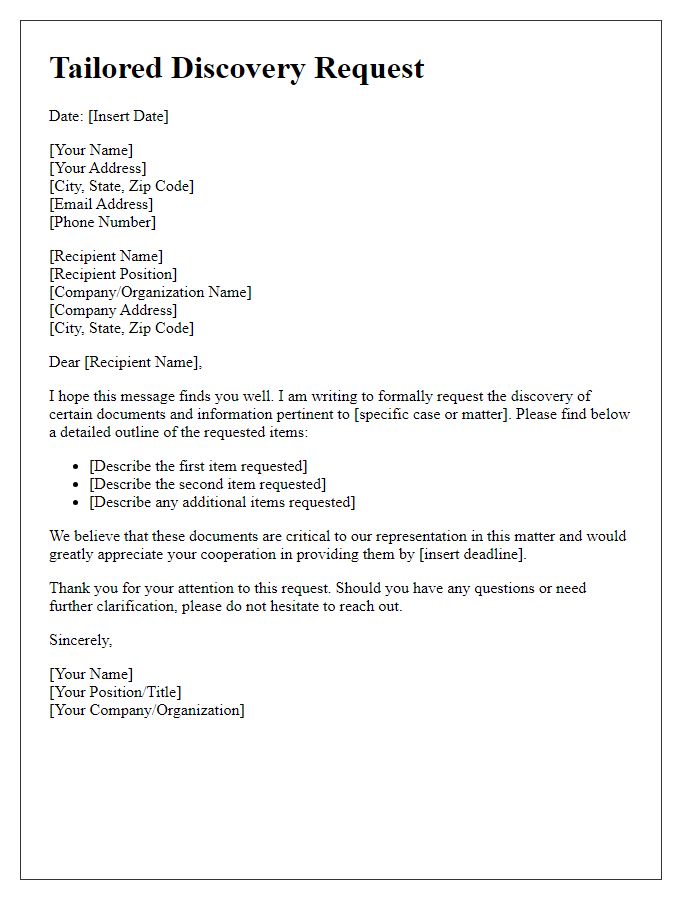
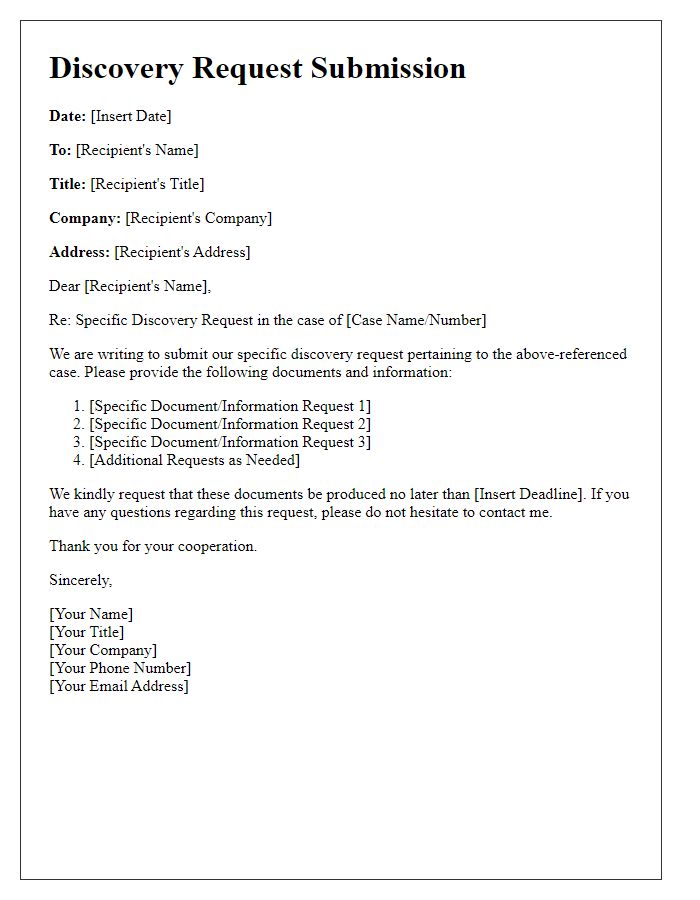
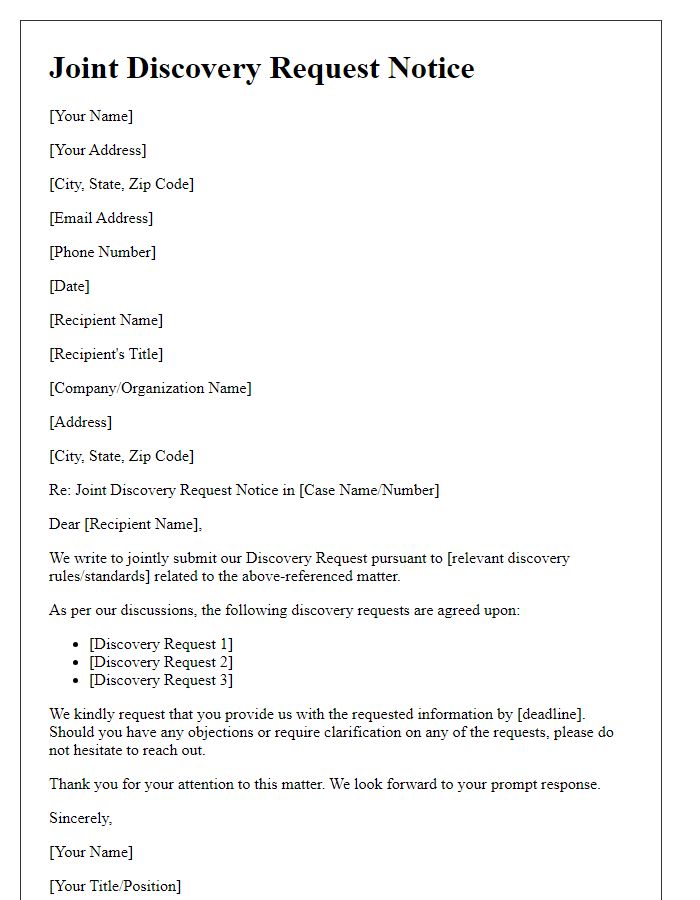
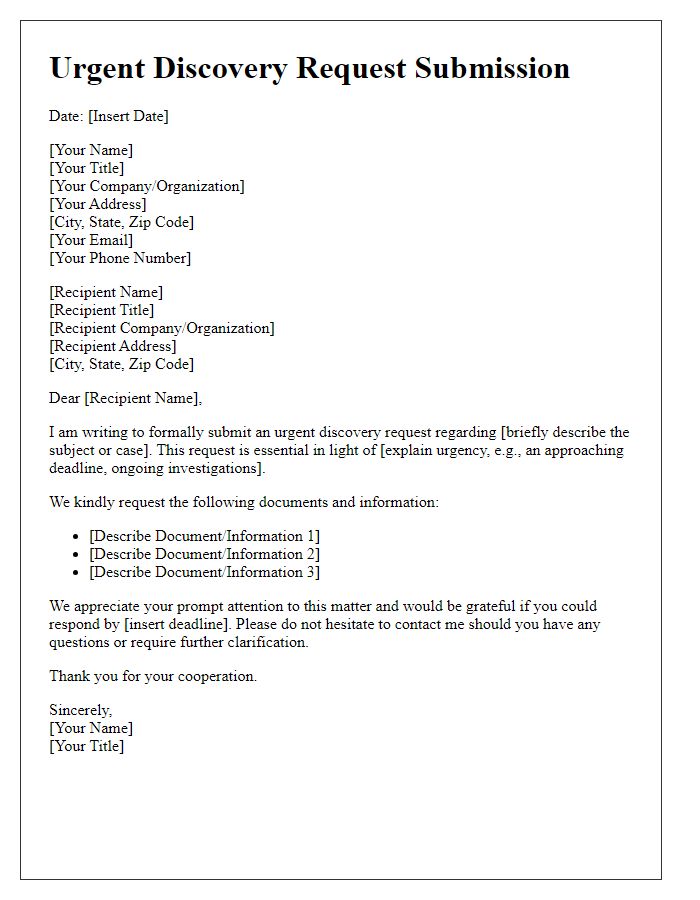
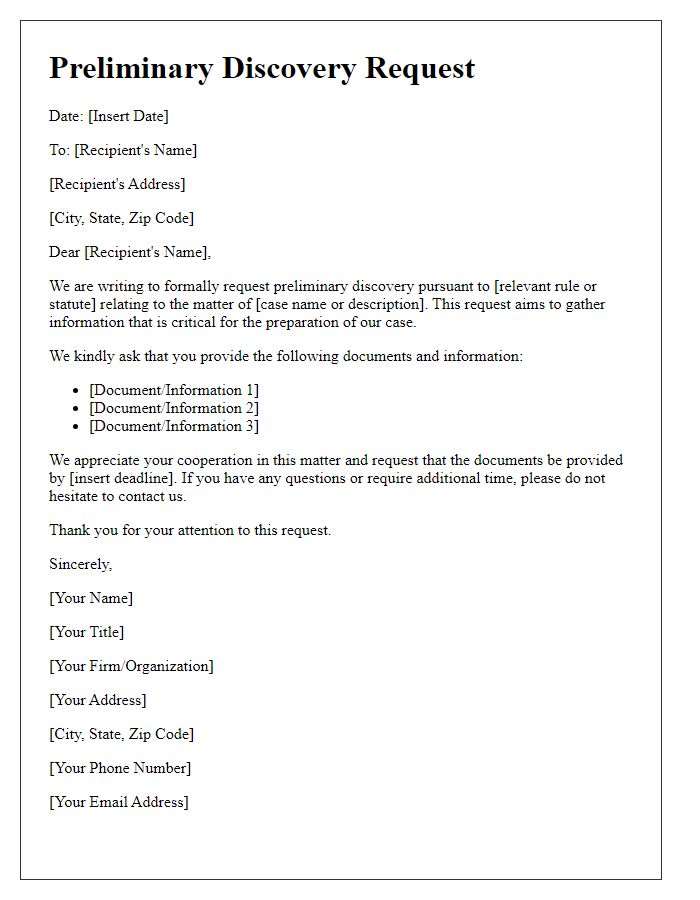

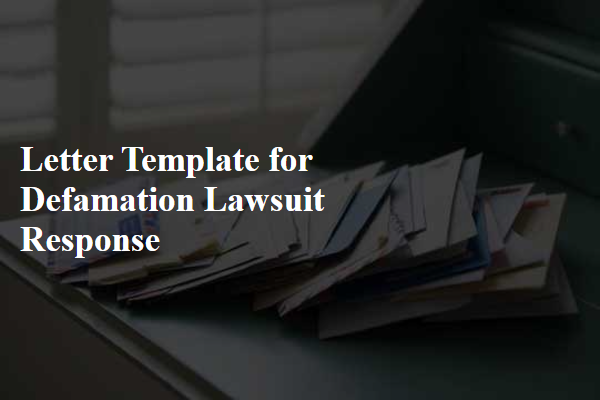
Comments